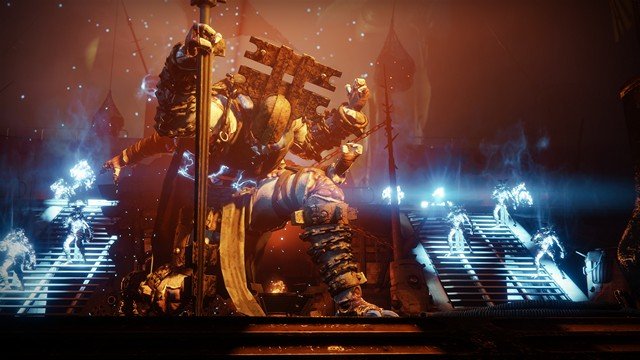I was very critical of the first two expansions for Destiny 2. Curse of Osiris and Warmind did little to further the overarching story of Destiny and contained way too little content for the price. I know I wasn’t alone in desiring an expansion that would revitalize the game in a big way. Since its launch, Destiny 2 has managed to rub a large chunk of the fanbase in the wrong way, and Forsaken really needed to get the game back on track to survive. Fortunately, it did.
This review is going to encompass the content that came with Destiny 2: Forsaken, and the updates made to the game in anticipation of the launch of the new expansion. This is coming from a perspective of someone who played the Destiny 2 base game and the first two expansion but left the game in between. If you’ve stuck around in the lulls between content drops you’re probably invested enough to pick up Forsaken regardless of what any review says.
Minor story spoilers below.
Destiny 2: Forsaken Review: Something to Care About
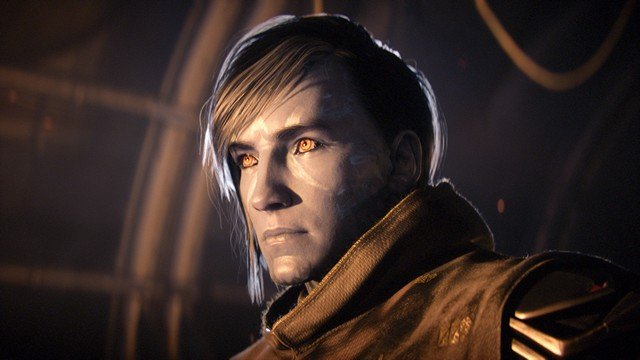
The weakest part of the first two expansions for Destiny 2 was the narrative. I didn’t really care about Osiris or Ana Bray because even though they were alluded to in Destiny lore before, they just sort of popped up and demanded your attention. It’s hard to become invested in characters that are supposed to be these legendary figures who demand your attention instead of earning it.
In Warmind and Curse of Osiris, nothing really felt urgent in anything other than a superficial way. With so much happening in the Destiny universe having these self-contained little adventures that didn’t do much to push any overarching plotlines forward just felt lazy. Sure, we get to see a bit about how Zavala and Ikora Rey are becoming more and more contentious, but there’s no big pay off for completing either story.
One of Forsaken’s biggest strengths is that it presents you with familiar characters, hooks you into the story at the beginning, and gives you a reason to see it through to the end. If you’ve seen the trailers, you’ll know that the inciting action for Forsaken is the death of Cayde-6 at the hands of Uldren Sov, Prince of the Reef.
Uldren was previously imprisoned in the Prison of Elders but manages to break out and takes command of the Scorn. The Scorn are Fallen that have been resurrected by the use of Dark Ether and are warped and depraved. The story in Forsaken revolves around Uldran Sov and his Scorn army, and the Guardian avenging the death of Cayde-6.
Destiny 2: Forsaken Review: Somewhere to Care About
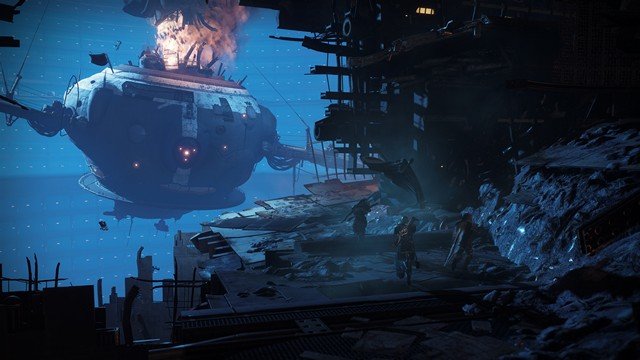
Mercury sucked. Mars less so, but it wasn’t an expansive and exciting new locale. Destiny 2 is a game that wants you to stick around after the story, and it really needs engaging environments to do so. The base game had some great areas. I enjoyed the EDZ and Nessus especially. However, Curse of Osiris and Warmind’s additions were small and boring.
Forsaken adds two new locations. The Tangled Shore, an asteroid wasteland where many of the Fallen in the Solar System hang their hats, and the Dreaming City, where the Reefborn Awoken are said to reside.
The Tangled Shore is where most of the campaign of Forsaken takes place. It’s a clump of asteroids connected by twisted debris, the remains of Fallen spacecraft. For the most part, you’ll face Fallen (both regular and Scorn varieties) here, but there are some Cabal and Hive mixed in here and there for good measure. It’s a place with a lot of character, and it has a real hand-made feel to it.
As you explore The Tangled Shore, you’ll run into things like a Fallen nightclub that serves as a Lost Sector, and a Hive ship crashed on the barren surface of an asteroid. These places tell their own little stories without anyone breathing a word, and add to the ambiance of the area. The Tangled Shore feels like somewhere that had a long and terrifying history before you got there, and that it’ll be continuing on long after you leave.
The Dreaming City, where much of Forsaken’s end-game content is, stands in stark contrast to The Tangled Shore. The homeland of the Awoken is a beautiful mountainous place filled with elaborate, high-rising towers and a duplicate dark dimension which hides the mystery of what exactly happened to the Awoken.
Destiny 2: Forsaken: Let There Be Light
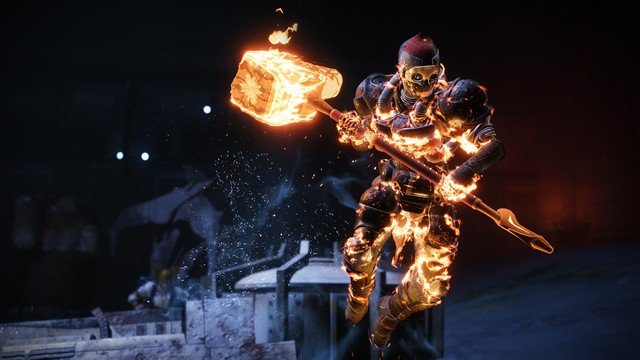
A new expansion means a level cap increase. Both light level and the character level cap have raised considerably in Forsaken. The light level cap is now 600 with a soft cap of 500, and you can climb 20 more character levels with your Guardian to hit level 50.
This is a significant improvement over the rather anemic increases in the previous two expansions and gives you plenty of room to grow your character. You’ll likely hit the level character level cap during the end of the Forsaken campaign, but it’ll take a bit longer to hit the soft cap of 500 then power your way through up to 600.
There are also nine new subclasses, three each for the Titan, Warlock, and Hunter. Instead of getting these through leveling up you have to get the first one by collecting an item called Visions of Light which drops from powerful enemies (the same kind that drop chests usually). Nab 100 of these and you get a mission that will unlock the first of the three. The second and third of your new subclasses have to be unlocked in the endgame in an area called The Blind Well.
The new subclasses aren’t OP, so there’s still reason to use the old ones, but they open up a way for the PvP meta to evolve further, and give you more tactical options.
Destiny 2: Forsaken Review: Gear Gains Complexity
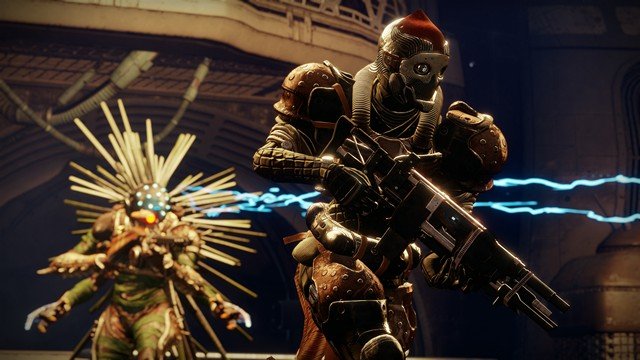
If you’ve played Destiny 2, you know how the gear grind used to be. Once you hit end-game if it wasn’t legendary or exotic grade stuff you immediately dismantled it or infused it into your high-end gear and kept it moving. This led to a feeling that pretty much everything other than exotics were disposable.
When most of the endgame leans on having you grind for gear, the disposability of anything other than exotics made almost everything after the campaigns a bore. Run through the raids, strikes, and so on once and there wasn’t really anything to keep you hooked.
Fortunately, Bungie has wholly overhauled the gear system in a big way. It’s no longer as easy as offering up a Legendary Shard or two and some Glimmer to upgrade legendary and exotic grade gear to your max available light. The item requirement to infuse gear has gone up and grown in complexity considerably.
For some, the added work to upgrading a weapon or piece of armor might be frustrating, but it makes items actually feel vital again. Drop rates for legendary and exotics have been trimmed a bit as well. This means you’re actually going to have to use some of those rare grade pieces of gear you pick up. It felt weird at first since those blue items were so throw away for the first year of Destiny 2, but I quickly started to like the feeling of excitement I got when a purple engram popped. No longer is the grind about just exotics, and that’s a huge step up.
Quest givers are no longer just human-shaped slot machines for you to throw tokens in, as well. Instead of just racking up tokens for basically just chilling out in an area, you gain vendor reputation by accepting and completing bounties in a region. You can acquire bounties through almost anyone now, and they’ll give you a task like, “kill 20 Fallen in x are with solar powers.” It keeps you logging in since the bounties change daily, and it gives some much-needed direction to the endgame.
Destiny 2: Forsaken: Recording Your Deeds
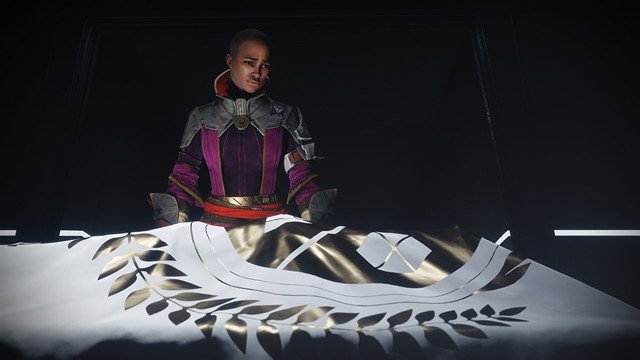
When Destiny 2 came out, I had to do a guide on every single scannable object in the base game. There are a ton of these things, and each time you scan one, you get a little piece of lore from your ghost. However, the game initially didn’t keep track of this sort of thing at all. No matter how many items you collected and feats you pulled off, you just had to kind of pat yourself on the back.
With Forsaken, Triumphs, and Collections have been added. There’s a new tab in the menu that contains detailed records of all your accolades. From whether you’ve completed specific story missions to every single item you’ve collected, it’s all there for you to see.
With a game as focused on long-term play, the Triumphs and Collections systems go a long way towards triggering pleasant memories. Even cooler, through Collections, you can respawn items and shaders you’ve obtained in the past. This means that there’s no more hoping for a certain thing to drop. You get it yours, and with some caveats, you can get it back forever with a small fee in glimmer and either Legendary Shards or regional items.
Destiny 2: Forsaken Review: Taking a Gambit
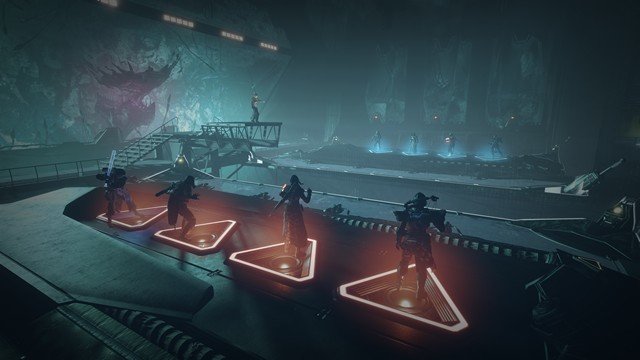
The biggest addition to Destiny 2 with the release of Forsaken other than the campaign is the new PvPvE mode. Gambit teams you up with three other players as you take down enemies to gain Motes of Light from downed enemies. You take these motes and place them in a device in the center of the arena. Once you hit 75, a boss appears. Defeat them first, and you win. However, if you die you lose your motes for good, so there’s encouragement to be tactical instead of just throwing bodies at enemies.
The genius of this mode comes in through the PvP. You can open a portal to the opposing team’s instance. You get a limited amount of time to wreak havoc on your enemy. The AI won’t attack you in the other team’s instance so you can use the chaos to your advantage. Taking down enemy players will erase any motes they haven’t banked which means that you can significantly slow them down.
You can also summon powerful enemies called blockers to fight the opposing team. These monsters will block players from banking any motes until they’re defeated.
Gambit comes down to a mixture of skilled gunplay and sheer speed and is an excellent addition to Destiny 2. It’s far from just a gimmick mode and definitely overshadows the Crucible as my favorite PvP mode.
Destiny 2: Forsaken Review: Rise of the Fallen
If you weren’t a big Destiny 2 fan before Forsaken, it’s unlikely this expansion will turn you completely around. It does a lot to address issues that the community had with the game, but it’s still Destiny 2 regardless of how some of the systems changed. It is a start back in the right direction for Destiny 2, though, and it got me plugged back in after the disappointment of Curse of Osiris and Warmind.
I still haven’t gotten a chance to play through the new raid, Last Wish, and it might be terrible. However, the rest of the expansion shows that Destiny 2 is redeemable if Bungie can keep up this momentum.
The one thing I was disappointed with is the $40 price tag. Given how much of a let down the first two expansions were, Forsaken should have been offered for free or at a discount to those who already bought Curse of Osiris and Warmind or the Expansion Pass. Forsaken, like The Taken King in Destiny, requires the first two expansions to play as well, so you’re stuck shelling out more if you decided to pass on those.
Forsaken isn’t a good place to start Destiny 2, but it’s a great place to pick it back up. The game is young enough that you can still start at the beginning and get the full experience as well. Forsaken is a bit of a reset for pretty much everything about Destiny 2, and it’s one that gives me hope that the franchise is making a turn for the better.
-
Restructures the gear system in a way that makes each piece feel vital.
-
Campaign is much better than Curse of Osiris and Warmind.
-
New areas are expansive and engaging.
-
New enemies, the Scourge, are actually different and not just reskins.
-
Revitalizes the game in almost every way.
-
Gear grind gets even more intense.
-
Might be too pricey an investment for those wary of where the game is going.
-
Requires previous expansions to play.
-
Still doesn't go far enough towards making the Destiny lore coherant.
